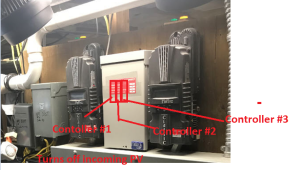Bluedog225
Texas
- Joined
- Nov 18, 2019
- Messages
- 2,909
Good morning,
At what point do I need to graduate up to a better class of fuse or breaker?
I have three 100 watt panels in parallel. So roughly 14 volts, 300 watts, and about 21 amps.
And a 30A victron PWM controller. 12 volt battery.
Can I use a 30 amp blade type fuse for both the panel to controller feed and between the controller and battery?
I don‘t want to pull an arc when I pull a fuse but don’t know what voltage/amps at which that starts to be an issue.
Thanks
At what point do I need to graduate up to a better class of fuse or breaker?
I have three 100 watt panels in parallel. So roughly 14 volts, 300 watts, and about 21 amps.
And a 30A victron PWM controller. 12 volt battery.
Can I use a 30 amp blade type fuse for both the panel to controller feed and between the controller and battery?
I don‘t want to pull an arc when I pull a fuse but don’t know what voltage/amps at which that starts to be an issue.
Thanks




